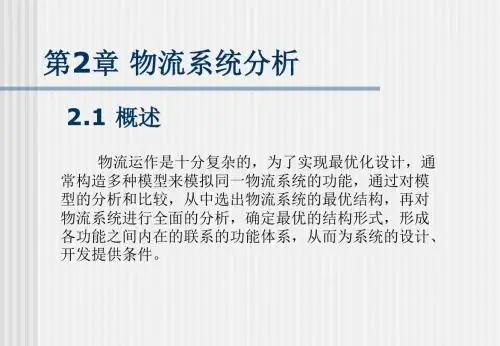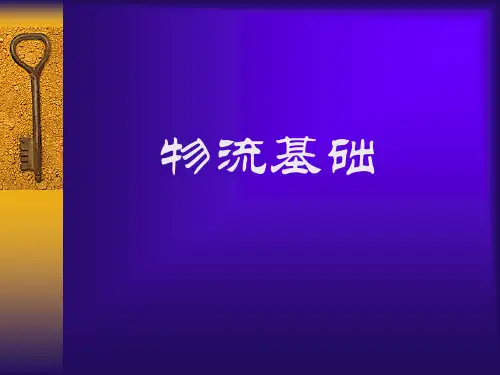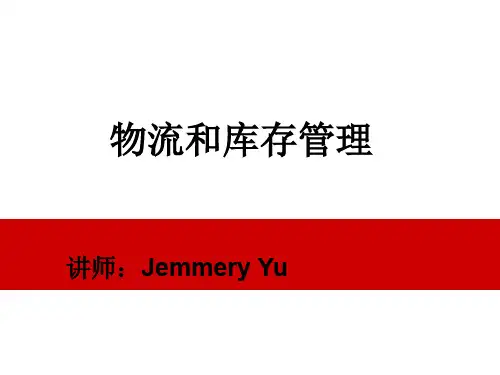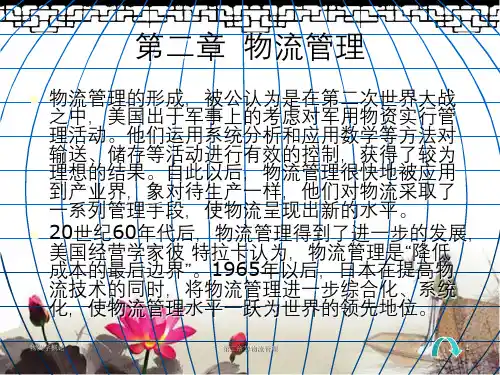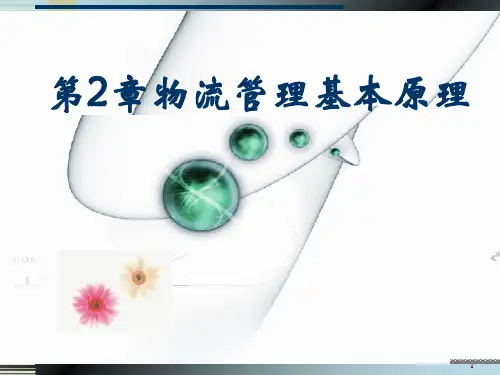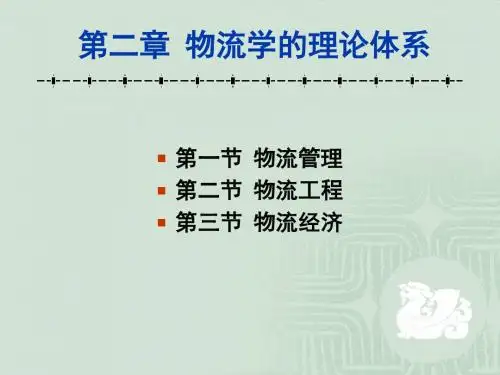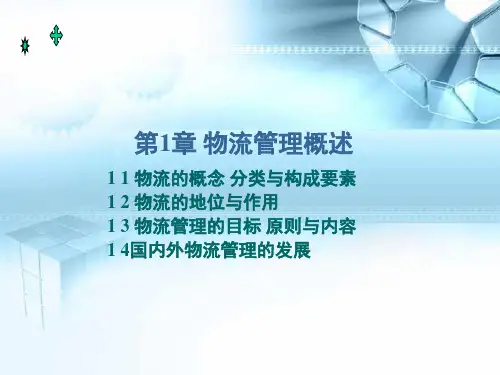- 1、下载文档前请自行甄别文档内容的完整性,平台不提供额外的编辑、内容补充、找答案等附加服务。
- 2、"仅部分预览"的文档,不可在线预览部分如存在完整性等问题,可反馈申请退款(可完整预览的文档不适用该条件!)。
- 3、如文档侵犯您的权益,请联系客服反馈,我们会尽快为您处理(人工客服工作时间:9:00-18:30)。
© Pearson Education, Inc. publishing as Prentice Hall 2-18
Managing Customer Service
• Service Failure and Recovery
© Pearson Education, Inc. publishing as Prentice Hall
2-15
Managing Customer Service
• Measuring Customer Service
– “you can’t manage what you can’t measure” – Must determine data sources to be used – Must determine what factors to measure – Organizations must resist excessive measurement
© Pearson Education, Inc. publishing as Prentice Hall
2-5
Order Management
• Order management refers to management of the various activities associated with the order cycle
© Pearson Education, Inc. publishing as Prentice Hall
2-4
Order Management
• Order management : the activities that take place in the period between the time a firm receives an order and the time a warehouse is notified to ship the goods to fill that order
• Order processing refers to the time from when the seller receives an order until an appropriate location (i.e. warehouse) is authorized to fill the order
Communication
Convenience
Customer complaints Order status information Return process Response to emergency situation
© Pearson Education, Inc. publishing as Prentice Hall 2-17
2-13
Customer Service
• Customer service is “the ability of logistics management to satisfy users in terms of time, dependability, communication , and convenience.”
© Pearson Education, Inc. publishing as Prentice Hall
2-3
Demand Management
• Three basic types of demand forecasting models:
– Judgemental – Time series – Cause and effect (associative)
© Pearson Education, Inc. publishing as Prentice Hall 2-14
Managing Customer Service
• Establishing Customer Service Objectives
– Specific – Measurable – Achievable – Cost-effective
Order Management
• Order delivery is the time from when a carrier picks up the shipment until it is received by the customer.
© Pearson Education, Inc. publishing as Prentice Hall
© Pearson Education, Inc. publishing as Prentice Hall
2-16
Select Customer Service Measures
Customer Service Dimension Time Dependability Measure Order Cycle time Inquiry response time Perfect order On-time delivery
Source: John T. Mentzer, “A Telling Fortune”, Industrial Engineer, April 2006, 42-47.
© Pearson Education, Inc. publishing as Prentice Hall
2-2
Demand Management
Source: Susan Lacefield, “Ten Tips for Faster Picking”, Logistics Management, July 2005, 71-76.
© Pearson Education, Inc. publishing as Prentice Hall
2-12
© Pearson Education, Inc. publishing as Prentice Hall
2-11
Order Management
• Order picking and assembly
– Often represents the best opportunity to improve the effectiveness and efficiency of an order cycle – Can account for up to 2/3 of a facility’s operating cost and time
© Pearson Education, Inc. publishing as Prentice Hall
2-10
Order Management
• Order picking and assembly includes all activities from when an appropriate location is authorized to fill the order until goods are loaded aboard an outbound carrier
– Methods of order transmittal • In person • Mail • Telephone • FAX • Electronically
© Pearson Education, Inc. publishing as Prentice Hall 2-8
Order Management
2-7
Order Management
• Order transmittal is the series of events that occur between the time a customer places or sends an order and the time the seller receives the order
Source: Roger A. Kerwin, Steve W. Hartley, and William Rudelius, Marketing, 9th ed. (Boston, MA: McGraw-Hill/Irwin, 2009), Chapter 16.
• Customer service is much more difficult for competitors to imitate than price cuts or other competitive strategies
Session 2
Demand Management, Order Management, and Customer Service
Demand Management
• Demand management can be defined as “the creation across the supply chain and its markets of a coordinated flow of demand.”
• Demand (sales) forecasting
– Refers to an effort to project future demand – Is a key component in demand management – Is helpful in make-to-stock situations – Is helpful in make-to-order situations
Managing Customer Service
• Service Failure and Recovery
– Situations will occur where actual performance does not meet the customer’s expected performance (i.e. service failure) – Examples of order-related service failures include: • Lost delivery • Late delivery • Early delivery • Damaged delivery • Incorrect delivery quantity
